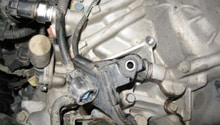Acura MDX: Transmission Diagnostic Guide
Learn how to properly diagnose many transmission problems and what can be done to remedy the situation.
This article applies to the Acura MDX (2001-2013).
Transmission issues can manifest themselves in the form of many different symptoms. Properly diagnosing such problems can be a very costly affair. In many situations the repair bills could be hundreds of dollars just to diagnose the issue, let alone, fix it. In some situations, shops can simply suggest replacing many unnecessary components in hopes that at least the offender will be taken care of, and this can be very costly indeed. Learning how to at least narrow down the focus isn't too difficult and will undoubtedly save you hassle as well as hard earned money. Read on to learn about the most common issues and symptoms that you'll come across in your MDX without costing you a penny. You might even be able to take care of some of these on your own with just a little bit of time and some basic tools.

Materials Needed
- Ratchet and socket set
- Flat head and Phillips head screwdriver
- Replacement fluid
Step 1 – Check your transmission fluid
If you have a major problem, your fluid will tell the story.
The transmission fluid tells a good tale of what is going on internally. If your fluid is burnt, smells burnt, looks black and there are a lot of chunks of debris in it....well, it's time to start looking for a good pro to replace that transmission. Unfortunately, there is no other way around that truth. Otherwise, if the fluid is simply dark brown, not overly stinky and there is really the minute and minimal pieces of metal shavings in it, you likely have many more miles to put on your car, so exhale and lets start poking around.
- Jack up the front end.
- Remove the plastic skid plate or splash guard.
- Find and remove the 17mm drain plug and drain the tranny fluid into an appropriate container.
- Inspect the end of the drain plug which is magnetic, as well as run a magnet through the fluid in the drain pan.
- If you find large chunks of metal in the pan or on the plug, you have some internal problems to take care of.
- Replace the drain plug and torque to 36 foot pounds.
- Replace the splash guard.
- Drop your front end, remove the air box and the intake hose.
- The 17mm fill plug is just below and to the left of the fuse box.
- Add the appropriate amount and type of transmission fluid.

If your transmission fluid is acceptable in level and color, then you need to start checking out other things that could be happening.
Step 2 – Perform a 3X flush and fill
The transmission will start to sound as if it's grinding, so the 3x flush will get all the particulates out of there and should stop that problem.
There is a common folklore in Acura land that simply draining the transmission fluid is a bad idea, as it dislodges buildup but does not allow it to drain from the transmission. In theory, this means that chunks of transmission gunk are now free floating in the case. "Flushing" the transmission fluid works by repeatedly draining and filling the transmission to thoroughly clean the transmission, and make sure that the only fluid remaining in the transmission is fresh fluid.
One of the most common complaints with MDX owners is hearing or feeling a grinding noise emanating from somewhere in the transmission. If you have performed Step 1 already, you should be able to relax and not necessarily worry about gears grinding away to nothing or pieces of transmission breaking off into your pan. Your transmission itself, then, is likely fine; however, you may have excessively dirty fluid or some gunk built up in the tranny itself that isn't real easy getting clean. One option that has been proven very successful is performing a 3x flush with rear differential fluid in the mix.
- Use three quarts of rear differential fluid and flush three times.
- Use three quarts of regular transmission fluid and flush two more times.
- The third flush, add in 1.7 quarts of transmission fluid and 1.3 quarts of VTM.
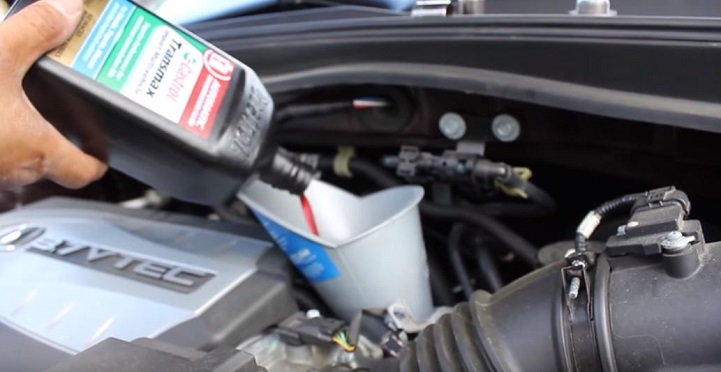
If the transmission flush didn't resolve your issue, you will need to start looking at individual components.
Step 3 – Swap out your transmission pressure sensor switches
When they go bad, your shifting will start to feel really rough, especially around 3rd and 4th gears.
The transmission fluid pressure sensors are exactly what they sound like, they control how much line pressure is sent through the transmission to aid with gear changes. When the switches go bad, you may experience surging or really rough up or downshifts. Your MDX might even go into limp mode. Fortunately, these switches are super easy to replace,
- For the 4th gear switch, you get to it from above through the engine compartment. It is located just below and to the left of the fuse box. Just remove the air intake tube, then pop off the electrical connector and put a socket on it.
- The third gear switch is behind the splash guard in the driver's side front wheel well. Pull off the splash guard and the fender well cover, and there it is. Pull off the electrical connector and put a socket on this one and you are done.
(Related Article: How to Replace Transmission Pressure Sensors - AcuraZine.com)
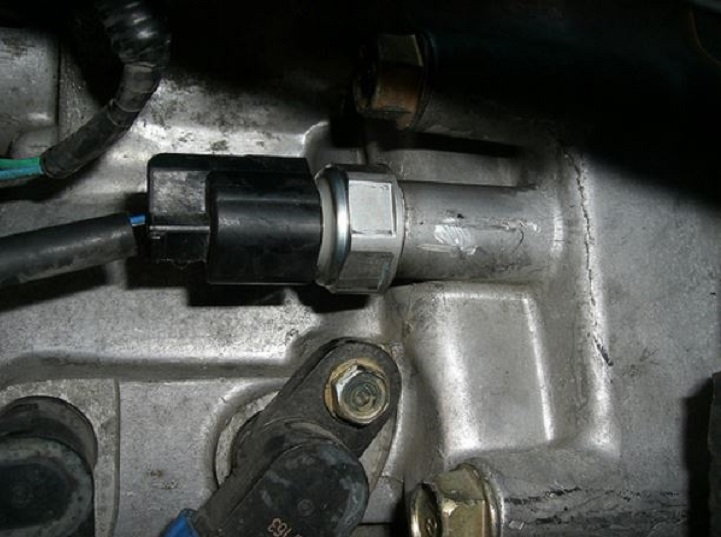
If these did not solve your problem, you may need to change your fluid.
Step 4 – Consider using GM Synchro Mesh or Redline Racing ATF
In many cases, MDX owners have experienced success swapping out the OEM tranny fluid with Redline Racing or GM's Synchro Mesh.
After a 3X flush, many owners have replaced the current fluid with Redline. The combination of the two actions have produced great results. The pressure sensors will last 50-75,000 miles, so if you are pushing these numbers, you should replace them as well as perform the 3X flush and make the switch. Make sure that you replace the Redline annually or every 30,000 miles to keep your transmission running well into the future.
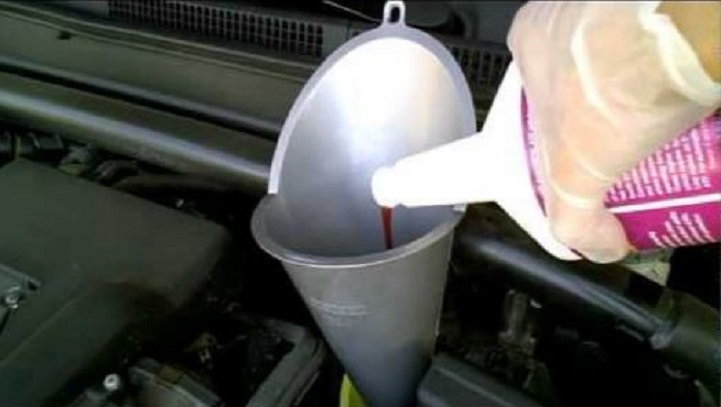
If you have let it go too long and got to those switches too late, you could have burned up your TC.
Step 5 – Consider replacing the torque converter
If your sensors were not replaced in time, this could have caused your torque converter to overheat and become damaged.
The most common weak point in the automatic transmission of late model Acura's is actually the torque converter. This is the piece that goes between the transmission and the engine's flywheel, and it transmits engine torque through the transmission. When the transmission changes gear, the engine RPMs need to change in order for it to be handled smoothly and without shock, and the torque converter works as a fluid filled coupling to dampen that shock.
If the torque converter fails, your transmission will either stop working entirely, or work albeit poorly, very briefly and roughly until it fails. This most commonly shows up as transmission "slippage" where the engine RPMs shoot up, but the car does not accelerate. If this is the case, its best to shut the car off immediately and tow the car to a repair shop for a replacement before the entire transmission sustains damage.

If the torque converter didn't fix the problem, It may be time to look at the transmission.
Step 6 – Consider a replace or rebuild
Some early models had heat issues requiring a recall.
While Acura had an MDX recall in 2002 based upon very specific heat conditions, other models may have similar issues. If you have an early year model MDX, you may want to have it checked out for any recall work that could be done. If you have flushed and changed the fluids, switches and even changed out the torque converter, and soon thereafter still had transmissions issues, it's time to consider your options. Either get a new tranny, rebuild your current one, or start looking at more later model MDX's. If you decide to have the transmission replaced, be prepared to spend a hefty amount of bills; however, using an independent transmission specialist will be about half the cost of having a dealership do the work. If you do go the independent route, make sure that you find a pro who is very familiar with the Acura brand and these specific transmissions.
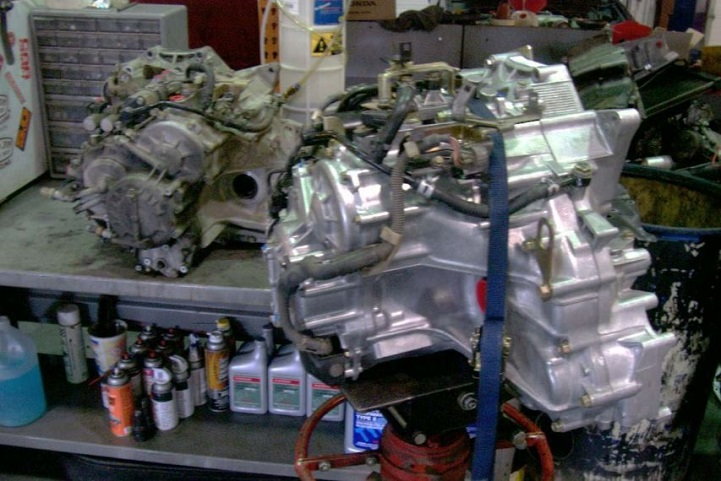
Related Discussions
- Acura Transmission Problems - AcuraZine.com
- Looking to Buy...Acura TL...Transmission Problems - AcuraZine.com
- Transmission Problem FAQ - AcuraZine.com
- Transmission Problem, 2003 Acura TL - AcuraZine.com


